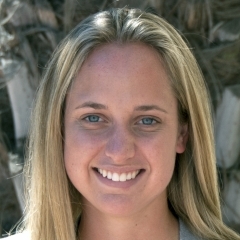
Date:
Location:
Speaker:
Title: Visualizing Anomalous Solute Diffusion in Ionic Liquids and Ionogels
Advisors: Matthew Helgeson and Todd Squires
Abstract:
Ionic liquids (ILs) are promising solvents that are poised to replace conventional industrial fluids in a number of separation and reaction processes. In these applications, ILs offer improved solute selectivity, energy efficient recyclability, higher loading capacity, and reduced environmental toxicity in comparison to traditional organic solvents. However, multiple IL-solute pairs are known to suffer from slow solute dynamics, which impede mass transfer in emerging IL technologies. Since slow solute diffusivity is commonly associated with high IL bulk viscosities, ILs are often selected from a vast ion design space on the basis of their viscosity—despite the fact that continuum viscosity-based models provide inaccurate diffusivity predictions.
In this work, we develop mechanistic understanding of anomalous diffusion in ILs, and use it to provide direct insight into solute transport limitations in ILs and develop quantitatively accurate analytic predictions of solute diffusivity. In our approach, we develop and employ a novel method, microfluidic Fabry-Perot interferometry, that enables label-free visualization of solute concentration fields as they evolve spatially and temporally. This technique is used to measure the gradient-driven sorption of solutes in three canonical IL-solute systems: (1) CO2 reactive absorption by amine-based ILs; (2) H2O sorption by methylimidazolium halide ILs; and (3) H2O sorption by poly(ethylene glycol) methylimidazolium ionogels. In system (1), the measured concentration profiles directly map the propagation of CO2 reaction fronts, and quantify the effect of viscosity increases upon sorption. In systems (2) and (3), the concentration profiles enable high-throughput extraction of composition dependent diffusivities over a broad phase space, and the development of mechanistically distinct transport models. Specifically, diffusion is modeled by an activated process of water molecules hopping between ion pairs where the magnitude of the electrostatic activation barrier follows the strength of hydrogen bonding with the methylimidazolium head group. We find that hydrogen bonding strength can be measured independently via 1H NMR, and subsequently used to calculate accurate solute diffusivities. We anticipate that the new conceptual frameworks developed using this visualization platform will improve a priori diffusivity predictions, help identify ion moieties that control diffusion, and ultimately enable rational design of task-specific ILs.



